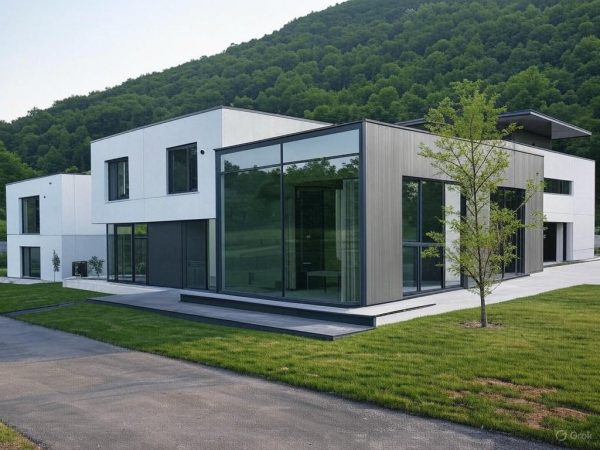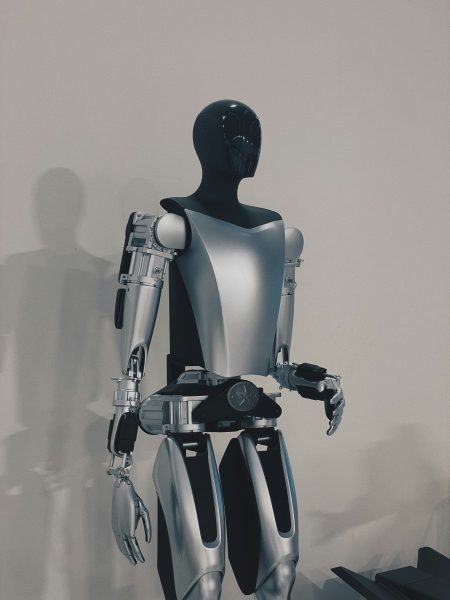Modular homes, also known as prefabricated homes, have become increasingly popular across the globe in recent years. They are known for their convenience, sustainability, and of course design flexibility. Despite the appeal of modular homes, there are still many different misconceptions and myths surrounding them. So, let’s dispel some common myths about modular homes and highlight the many benefits of their use throughout the country.
Myth 1: Modular Homes Are Cheaper Than In-Situ Homes
One of the most common myths about modular homes is that they are cheaper than traditional homes. Although this can be true in some circumstances, it’s not always the case.
The Reality
A modular home is constructed by a professional group of tradespeople in a controlled factory setting. During the entire process, they follow the same building standards as a traditional home. However, unlike a traditional home, modular homes require additional elements such as a steel chassis or prestressed concrete slab as a base. The actual transportation of modular homes to their final location also adds to the overall cost of the structure.
With that said, modular homes are also known to be more affordable than traditional homes, especially in more rural locations. Constructing a traditional home in a more remote location will incur higher labor costs, and of course, increased transportation costs for materials and laborers. Modular homes, on the other hand, are built off-site and then delivered to the location, which makes them a more cost-effective option for those living outside of the city.
Takeaway:
While modular homes can be cheaper than a traditional home in a metropolitan area, they are more competitively priced, or even cheaper than a traditional home, in more remote locations. As a result, modular homes are a more viable option for those who live in rural or countryside areas.
Myth 2: Modular Homes Can Only Be Built Small
Another common myth about modular homes is that they can only be built to accommodate smaller families. This misconception likely stems from the popular belief that fabricated homes are smaller, simply because they are often showcased in magazines or on TV that way. However, today’s modular homes can easily accommodate large families, with many bedroom layouts, on multiple floors.
The Reality
Although it is true that prefabricated small houses are often associated with smaller modular homes, there is very little restriction to the final size of the home. They can range from small, single-section designs that are perfect for a bachelor, to multi-module residences that can rival the size of any traditional home. There are a number of unique floor plans available including multi-bedroom units, two-story designs, and even expansive living room layouts with vaulted ceilings.
Takeaway:
Ultimately, modular homes are not limited by size. While we may usually see them as small units that are perfect for individuals, they can easily be designed to accommodate couples and large families.
Myth 3: Modular Homes Are Not Durable
A common concern for many people is the perceived lack of durability. Many prospective buyers believe that because the homes are fabricated off-site, they lack any form of structural integrity comparable to a traditional home.
The Reality
Fortunately, this myth is far from accurate. Modular homes are often more durable than traditional homes due to the way that they are built. After all, they are designed to handle the increased stress of being transported to their final location.
Moreover, modular homes are designed to comply with the same building codes as standard traditional homes. This means that they will comply with standards for energy efficiency, brushfire safety, and wind load.
Takeaway:
Without question, modular homes are extremely durable. They are specifically designed to meet and exceed the same structural standards as any traditional home because they must endure the stresses associated with transportation, while also complying to the same building regulations. This results in a stronger, longer-lasting, and higher-quality home.
Myth 4: Modular Homes Are Difficult to Finance
For some people, the first thing that comes to mind is the myth that modular homes are difficult to finance. While some are under the impression that banks and lenders don’t view modular homes in the same way as traditional homes, that is far from the truth.
The Reality
Although in the past it was considered more difficult to obtain financing for modular homes, this is no longer the case. In fact, most banks and financial institutions now view modular homes the same as they would a traditional home. The most important factor that a lender takes into consideration is whether the home is permanently attached to the land. And, unlike a trailer home, modular homes are permanently affixed.
Takeaway:
Today, financing a modular home is no more difficult than obtaining financing for a traditional home. Most banks and lenders are increasingly familiar with the various modular home constructions and generally offer the same mortgage options for both types of homes.
Image by Jens Neumann from Pixabay
Myth 5: Modular Homes All Look the Same
Perhaps one of the most persistent common myths about modular homes is that every single one looks the same. Sure, in the early days of prefabricated housing, the designs were limited and therefore looked similar, but this is no longer the case.
The Reality
Modular homes today offer a wide range of different design options thanks to many advances in technology and construction methods. It is easy to customize just about any part of a modular home to suit any family or business’s needs. There is also a wide array of architectural styles to choose from, which allows a homeowner to customize the home both inside and out.
Takeaway:
Modular homes today are extremely customizable, and they are designed to meet or exceed anyone’s aesthetic preferences. Whether you are looking for a modern minimalist home or a more traditional country home, there is bound to be a modular home design that is perfect for you.
Myth 6: Modular Homes Are Low-Quality
Of course, you can’t talk about common myths about modular homes without also mentioning the belief that they are constructed of inferior-quality components. All too often, people assume that because modular homes are constructed off-site, they are naturally constructed with lower-quality components.
The Reality
It’s important to remember that modular homes are often superior in quality to that of traditional homes. The factory environment where they are constructed is precisely controlled, to ensure that every aspect of the construction process is monitored and inspected. This results in a higher level of precision than can be found in a traditional home.
Moreover, most modular homes today are built using better materials than traditional homes because they are required to meet and exceed the strict building codes and regulations. This is important because modular homes need to be able to withstand the stresses of being transported to the site, and placed on their permanent foundation.
Takeaway:
There is no question that modular homes are built to the highest standards of quality, often surpassing the level of quality found in a traditional home. Thanks to the manufacturing process, every aspect of the construction and assembly of modular homes today is precisely controlled.
Myth 7: Modular Homes Don’t Appreciate in Value
Another common misbelief is that modular homes don’t appreciate over time. Granted, older mobile homes did not appreciate, but today’s permanent structures will appreciate just like a traditional home.
The Reality
Like traditional homes, today’s modular homes are considered to be permanent structures. Although wheels are used in some cases, for instance small park homes, the wheels are typically removed at final assembly. So long as they are properly maintained, modular homes can easily appreciate just like any traditional home.
Takeaway:
Just like a traditional home, modular homes can appreciate in value. They are considered to be a permanent structure, and because they meet and exceed local building regulations, they are more than capable of retaining and appreciating over time.
Myth 8: Modular Homes Are Not Environmentally Friendly
While it’s true that other forms of prefabrication are not as environmentally friendly as one would like, how a modular home is constructed and transported to the site reduces the overall environmental impact of the home’s construction.
The Reality
Modular homes are more environmentally friendly than traditional homes because there is less material waste in the construction process. As the homes are built in a controlled factory environment, the overall construction process itself is more efficient thanks to the strict protocols in place for recycling any excess material. Most modular homes today are designed with sustainable features such as solar panels, energy-efficient windows, and water-saving systems. All of this equates to an eco-friendly option for homeowners.
Takeaway:
For the most part, modular homes are environmentally friendly and offer superior energy savings to traditional homes. Even with the transportation of a modular home to the site it has a lower carbon footprint than a traditional home.
Image by Harry Strauss from Pixabay
Myth 9: Modular Homes Don’t Last as Long as Traditional Homes
One of the more frequent misconceptions regarding modular homes is that they have a shorter life expectancy than traditional brick-and-mortar homes. People naturally assume that because they are prefabricated, they won’t hold up to the test of time.
The Reality
It’s important to always remember that modular homes are built to meet and exceed the standards of a traditional home, simply because they need to withstand the rigors of transportation and installation. Most modular homes will use higher-quality materials and include additional internal reinforcements that allow the sections to be bolted together on-site. And, unlike a traditional home, none of the construction materials are exposed to the elements during the construction process.
Takeaway:
Modular homes today are built to last. They can offer the same lifespan as any traditional home, and, with proper maintenance, they can provide a homeowner with decades of comfortable living.
Myth 10: Modular Homes Can’t Be Moved Once Installed
While modular homes are in fact considered to be a permanent home, many people believe that once the home is placed on site, it can never be moved. Once again, this myth is the result of confusion between a modular home and a mobile home.
The Reality
Yes, a modular home is designed to be installed permanently, but it can be relocated in certain situations. After all, modular homes are built in modules and they are capable of being disassembled and moved should the need arise. However, just like moving any home, the process can be complex and expensive.
Takeaway:
Although modular homes are designed to be permanent, if the need arises, they can be moved. As with relocating any home, the process requires professional assistance and it is not typically done unless it is necessary.
Conclusion
The fact is, that the common myths about modular homes often stem from outdated beliefs that modular homes and mobile homes are the same. A lot has changed in modular home construction over the past few decades, and today’s homes are very versatile, environmentally friendly, and constructed using nothing less than the highest quality materials available.

